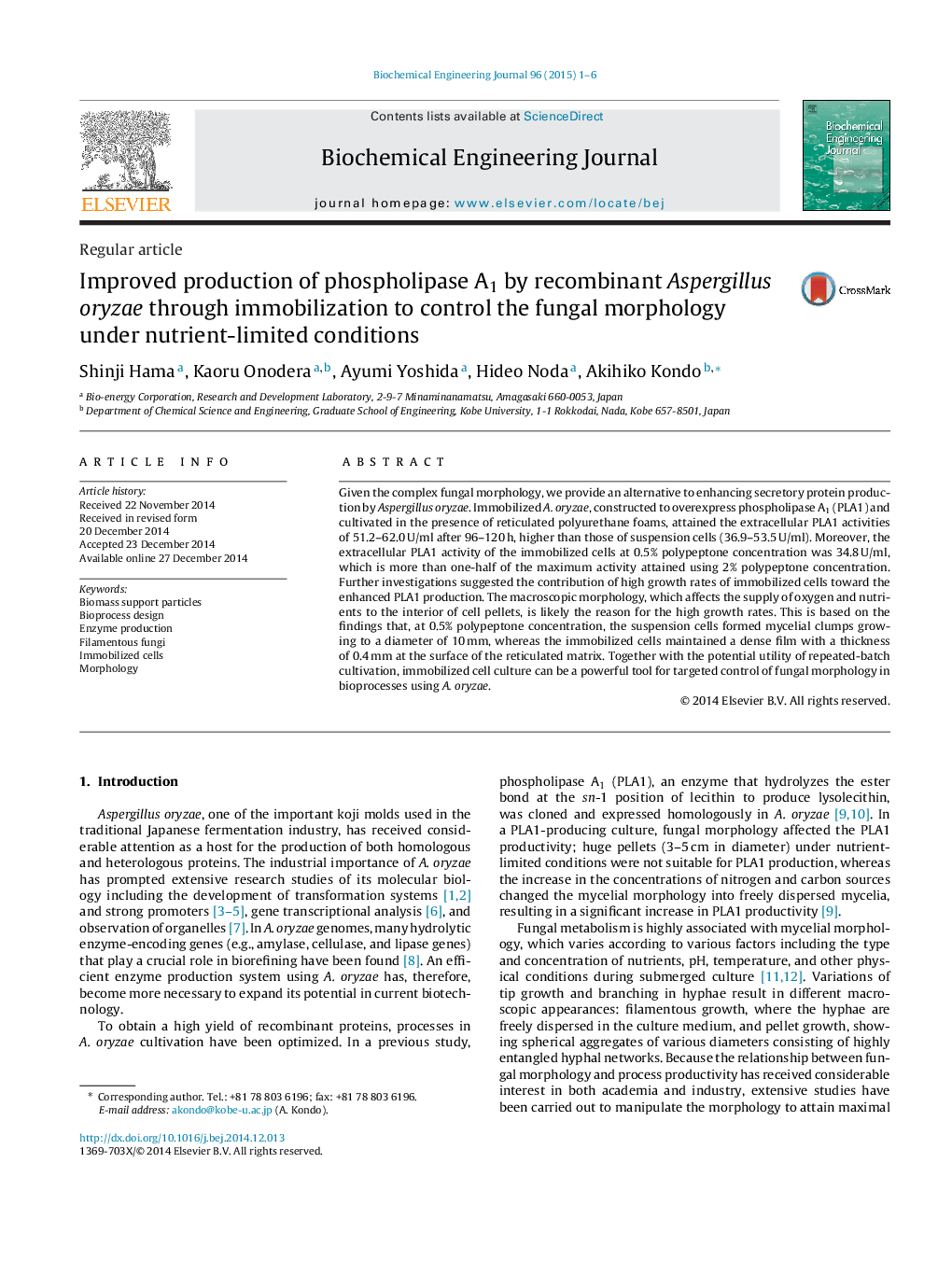| Article ID | Journal | Published Year | Pages | File Type |
|---|---|---|---|---|
| 2978 | Biochemical Engineering Journal | 2015 | 6 Pages |
•A marked preference for enzyme secretion using immobilized Aspergillusoryzae.•Immobilized cells show high growth rates even with a limited nutrient supply.•Immobilization can maintain morphology of A. oryzae regardless of nutrients.•Repeated-batch enzyme production can be achieved by immobilized cell culture.
Given the complex fungal morphology, we provide an alternative to enhancing secretory protein production by Aspergillus oryzae. Immobilized A. oryzae, constructed to overexpress phospholipase A1 (PLA1) and cultivated in the presence of reticulated polyurethane foams, attained the extracellular PLA1 activities of 51.2–62.0 U/ml after 96–120 h, higher than those of suspension cells (36.9–53.5 U/ml). Moreover, the extracellular PLA1 activity of the immobilized cells at 0.5% polypeptone concentration was 34.8 U/ml, which is more than one-half of the maximum activity attained using 2% polypeptone concentration. Further investigations suggested the contribution of high growth rates of immobilized cells toward the enhanced PLA1 production. The macroscopic morphology, which affects the supply of oxygen and nutrients to the interior of cell pellets, is likely the reason for the high growth rates. This is based on the findings that, at 0.5% polypeptone concentration, the suspension cells formed mycelial clumps growing to a diameter of 10 mm, whereas the immobilized cells maintained a dense film with a thickness of 0.4 mm at the surface of the reticulated matrix. Together with the potential utility of repeated-batch cultivation, immobilized cell culture can be a powerful tool for targeted control of fungal morphology in bioprocesses using A. oryzae.
